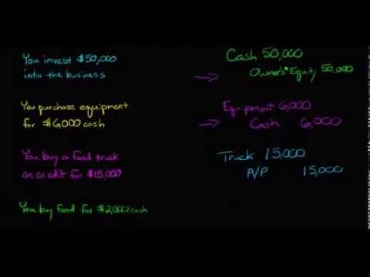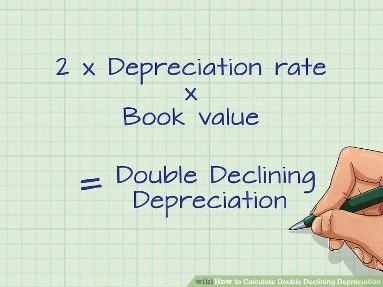Bank Reconciliation Statements are essential tools that help businesses ensure their internal cash records align with their bank statements. By identifying and adjusting for discrepancies such as outstanding checks, deposits in transit, and bank charges, companies can maintain accurate financial records and detect potential errors or fraud. Below are detailed examples of bank reconciliation statements to illustrate the process. Bank reconciliation is an important financial control process that helps ensure your financial records are accurate, and there are zero unexplained inconsistencies in your day-to-day transactions. Bank administrators process bank service fees, interest, and other bank transactions that you might not be aware of or not know the exact amounts of. A bank statement shows you those transactions and enables you to capture them in your records to reflect all the transactions affecting your business.
Ideally, you should run a reconciliation each time you receive the statement from your bank. The bank may send you a bank statement at the end of each month, each week, or, if your business has a large number of transactions, they may even send one at the end of each day. In addition, there may be cases where the bank has not cleared the checks, however, the checks have been deposited by your business.
Step 5 – Are the adjusted balances equal?
A liability account in a bank’s general ledger that indicates the amounts owed to bank customers for the balances in the customers’ individual checking, savings, and certificate of deposit accounts. Company errors may require additions or subtractions from the company’s general ledger Cash account. One type of error is a transposition error which involves the switching of digits within an amount.
Your bank statement balance may be overstated since it doesn’t include any outstanding checks that have not yet been cashed. By closely following these structured steps and ensuring detailed documentation, GadgetFlow Inc. effectively completes their bank reconciliation process. Here’s how to wrap up your bank reconciliation for GadgetFlow Inc., to make sure your bank and book balances match, showing your finance records are spot on. There are times when the bank may charge a fee for maintaining your account, which will typically be deducted automatically from your account. Therefore, when preparing a bank reconciliation statement you must account for any fees deducted from your account.
Best Practices for Managing Your Bank Reconciliations
Increase the accuracy of your financial reporting and account reconciliation processes with this guide on how to achieve accurate bank reconciliations consistently. The bank reconciliation process is a means of ensuring that the cash book of the business is reconciled to the bank statement provided by the bank. You entered it immediately in your accounting records and deposited the the check into your account. After depositing the check, your bank immediately credited your account by $1000. Afterward your bank told you that Mr. X’s bank did not honor the check because there were not sufficient funds in his account. Your bank reduced your account by $1,000 and returned the dishonored check of $1,000 to you as NSF check.
Deposits in transit, or outstanding deposits, are not showcased in the bank statement on the reconciliation date. This is due to the time delay that occurs between the depositing of cash or a check and the crediting of it into your account. A deposit in transit is money that has been received and recorded in the cash book but has not yet been processed by the bank.
- Maintaining a clear picture of cash flow management is crucial for any business.
- Finally, document the entire reconciliation process, at a minimum capturing who prepared and reviewed the reconciliation and when.
- Several items can cause a difference between cash book and passbook balances, these items are typically only reflected in the passbook.
- After identifying the reasons your bank statement doesn’t match accounting records, you have to update your records.
The balance shown by your accounting record will differ from your bank statement by $1,000. As a result, you’ll need to deduct the amount of these checks from the balance. The purpose of reconciling bank statements with your business’ cash book is to ensure that the balance as per the passbook matches the balance as per the cash book. An outstanding check refers to a check payment that has been recorded in the books of accounts of the issuing company, but has not yet been cleared by the bank as a deduction from the company’s cash balance. Nowadays, all deposits and withdrawals undertaken by a customer are recorded by both the bank and the customer.
Reasons of difference between bank records (bank statement) and depositor’s accounting record:
You’ll have your Profit and Loss Statement, Balance Sheet, and Cash Flow Statement ready for analysis each month so you and your business partners can make better business decisions. In case you identify any errors made by the bank, contact them promptly to rectify the mistakes.
How Should a Bank Reconciliation Account for Timing Differences?
By bringing more payments online, Upflow not only helps businesses get paid faster but also significantly reduces the complexity of reconciliation. Mr. Alex approached his bank, and he was guided by the fact that his account had non-sufficient funds for July. However, after further analysis, he found out that the requirements for the minimum balance in the account had changed during this month, raising it to $5,000. Therefore, due to an insufficient balance in his account, Mr. Alex was charged $50.00. The difference is clearly due to interest accrued on the note purchased by John.
- Most differences highlighted by the bank reconciliation procedure are due to timing differences as one organisation may have posted an item which the other has not.
- ABC Company’s bank statement for December reflects an ending balance of $46,125, while the ending balance in their general ledger account for December is $43,250.
- It is important to note that it takes a few days for the bank to clear the checks.
- Company errors may require additions or subtractions from the company’s general ledger Cash account.
Your bank statement might not include them until they are cashed by the recipients. Bank reconciliation involves verifying the outstanding checks and adjusting your cash account accordingly. Suppose you run a small business, and your bank statement shows a deposit of $1,000.
Double Entry Bookkeeping is here to provide you with free online information to help you learn and understand bookkeeping and introductory accounting. Let’s say that you wrote a check for $50 to a vendor, but the check was later altered and cleared by the bank for $500. Free accounting tools and templates to help speed up and simplify workflows.
However, when the bank statement was received, it was found that the Closing Balance was $10,450. Jane wants to analyze the difference between her records and the bank statement. Neeta made a payment of $2,000 for the office rent on March 31st, which was recorded in her book of accounts in the same month.
Outside of the maintenance fees, a bank may also charge fees that relate to other specific transactions. Make a list of these items as they will need to be accounted for to reconcile the balances. After you have compared the deposits and withdrawals, determine any missing transactions. Payments by Upflow offers a modern solution by helping B2B businesses transition to digital payment methods that improve efficiency and accuracy.
Due to the overwhelming paperwork that the financial department deals with, it’s possible that some invoices get misplaced or are never recorded. You’ll also need to make an adjustment if you notice that a not-sufficient-funds (NFS) check hasn’t cleared. Also, if you’ve made a check payment at the end of the month, it might not clear until the following reporting period. With Upflow’s cash application module, payments are automatically linked to invoices, reducing the risk of unallocated payments.
A bank reconciliation reconciles the bank statement with nrv: what net realizable value is and a formula to calculate it the company’s bank account records. A bank reconciliation consists of a business’s deposits, withdrawals, expenses, and other activities directly impacting your bank account during a particular period. The purpose of this comparing and matching process is to ensure that discrepancies are identified and corrected. Typically, the difference between the cash book and passbook balance arises due to the items that appear only in the passbook.
At times, you might give standing instructions to your bank to make payments regularly on specific days to third parties, such as insurance premiums, telephone bills, rent, sales taxes, etc. Checks may be returned for several reasons, such as insufficient funds (NSF), a closed account, or a stop payment order placed by the issuer. Worse still, it impacts Days Sales Outstanding (DSO) — a critical cashflow metric. Incorrectly applied or unapplied cash means collection teams may chase customers who have already paid, invoice the wrong amounts, or fail to follow up when money is still owed.



